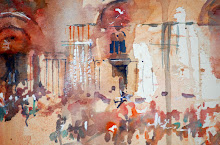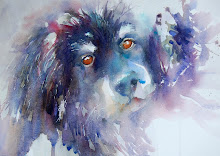With Cheetah Cub in South Africa 2010
I hate seeing any animal in a cage. I always have and so when I visited a vineyard in South Africa at first I was saddened to see beautiful cheetah in caged surroundings. So much so that I left without even going further into the sanctuary. I hadn't understood the importance of an ongoing project or why it was there. Having discussed the centre with colleagues who live in the area I returned to learn more.
The following information from the "Outreach" web site explains a little about the current situation.
I cannot imagine trying to tell my grandchildren or having them tell their own children in the future why such gorgeous creatures could become extinct.
*************************
It took 4 million years of evolution for the cheetah to become the exceptional animal it is today and only 100 years for man to place it on the endangered list. Now the fastest land animal in the world is losing its most important race: the race for survival. At the turn of the 20th century, an estimated 100,000 cheetahs lived throughout Africa and in parts of the Middle East and Central Asia. Today there are just 7,500 cheetahs left and South Africa is home to fewer than 1,000 of these majestic cats.
Cheetah Outreach is an education and community-based programme created to raise awareness of the plight of the cheetah and to campaign for its survival. Founder Annie Beckhelling launched the project in January 1997 with just one hectare of land proved by Spier Wine Estate and two cheetahs.
Cheetah Outreach is an education and community-based programme created to raise awareness of the plight of the cheetah and to campaign for its survival. Founder Annie Beckhelling launched the project in January 1997 with just one hectare of land proved by Spier Wine Estate and two cheetahs.
Cheetah Outreach is continually evolving and taking on new challenges. In addition to partnering with ambassador cats to inform the public about the problems the cheetah faces, Cheetah Outreach:
- Continues to be involved in environmental education, offering curriculum-linked school presentations and resources as well as workshops and fellowships for teachers.
- Breeds Turkish Anatolian Shepherd dogs and places them on South African farms to guard livestock in an effort to reduce conflict between farmers and predators.
- Hand-rears cubs from the Ann van Dyk Cheetah Centre and raises them to be ambassadors for the species.
- Partners with other cheetah conservation organizations worldwide.

























No comments:
Post a Comment